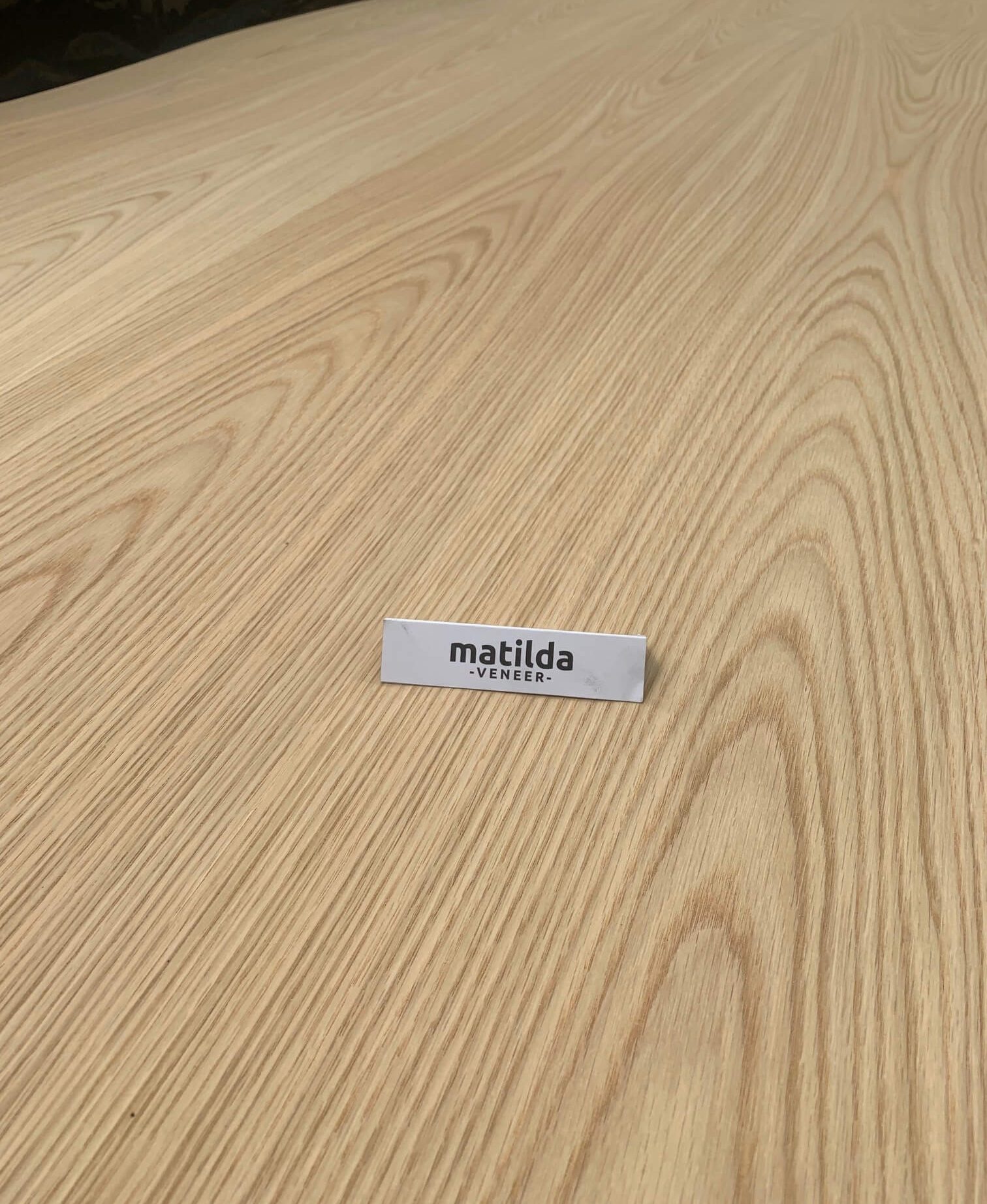American Oak and European Oak crown cut and quarter cut natural timber veneer imports have grown to the extent that this specie (of which there are several) is now the biggest imported veneer into Australia, and rightly so.
The texture, colour and consistency of both American and European oak allows contemporary wall innings, furniture and joinery to be designed that rarely date in appearance.
Adding to the beautiful grain structure, ease of staining and the ability to paint any number of solid colours over the grain, make this a veneer for every design application that stands the test of time.
So why does such a standard veneer in appearance have such a broad range of price points on panels?
Well with timber veneers, in many species size does matter, (Oak is no different), that is the number of matching veneer sheets able to be produced from one log.
Then we have colour, a light straw colour for Oak is desirable with veneer showing dark or red colours, streaking and different shades being relegated to the lower grades.
For both crown and quarter veneer we also have structure, crown cut structure should be central to the bundle and not have too much swing, this is seen in lower value veneers.
Quarter cut should be as straight as possible, not have too much swing or fish tail showing on the finished panel and be free of features.
(There is often confusion regarding rift and quarter cut veneers, rift cut produces much larger runs of matched panels, quarter cut less so. I have seen many quarter cut oak panels that could have come from rift production as the grade is also clean and straight but you only get 10/15 matching sheets typically from quarter production. Rift production can yield 100 plus matching sheets which is why rift oak is more expensive than quarter Oak. See TVAA website for information on veneer production).
Let’s not forget features such as pin knots, figure, small bundle runs and single bundles, all useful in some purpose but all available at different price points.
How the raw material is imported into Australia also has an impact on price, one option is as bundles that is converted to veneer sheets on a project-by-project basis by local manufacturers and a second option are veneer sheets produced overseas in a range of grades.
Imported layons are less expensive but can have inconsistency, especially if you are trying to match different length panels and the veneer itself can be thinner than the standard 0.5mm thickness supplied by American and European producers.
Your local panel layer may also require surcharges for sequence matching, end matching or special layups as this takes time and effort to assemble veneers in matching runs and can affect the price of the panels.
So, if you draw from the above indicators, a large log producing 50 matching faces with a light colour, central structure and free of defects will be more expensive than 50 sheets produced from smaller grade logs, showing colour variation and possibly having an occasional feature in the grain that have come from imported layons.
Both products have their place in the market but is it unrealistic to compare veneer panels in American oak produced from imported layons in price and quality to panels produced from veneer leaf to specifications requiring sequence and book end matching without considering the above guidelines and the end use.
TVAA members are striving to produce a broad range of timber veneer panels to the highest quality as demanded by Designers, Architects and Furniture makers and selection of the right veneer option (in any specie) is essential for any project to have a successful outcome.
TVAA members welcome discussion regarding your project and can offer the best options to achieve your vision, all we need to do is ask!
Terry Franklin
President Timber Veneer Association Australia / New Zealand



